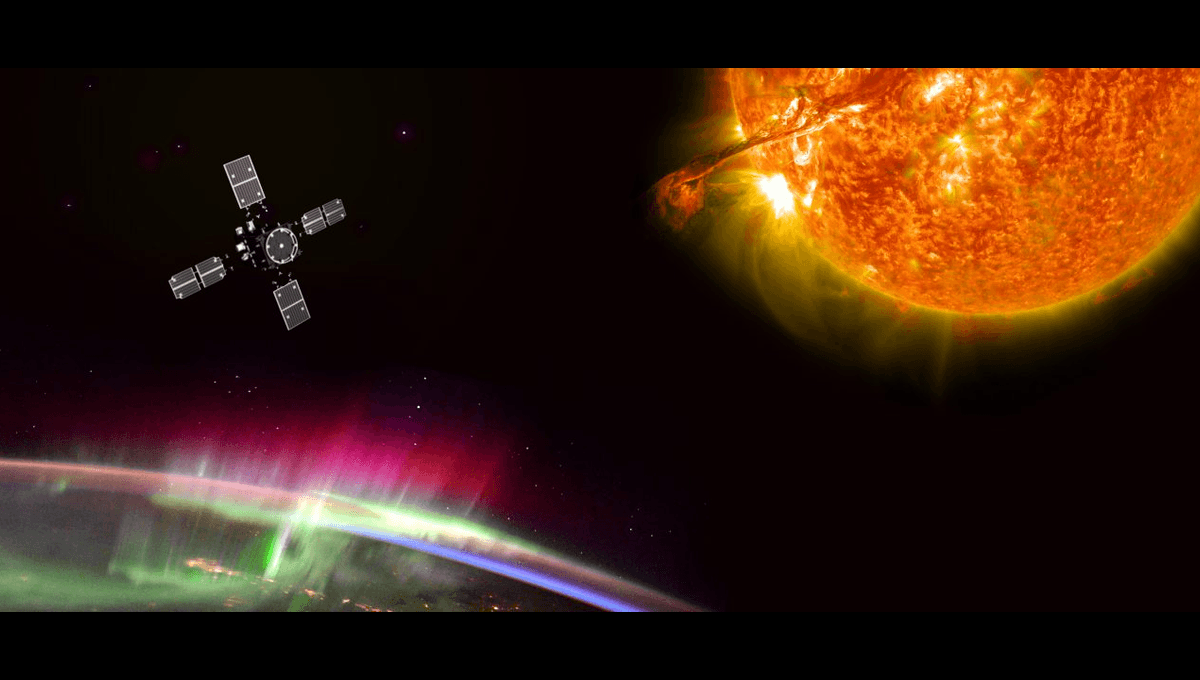
For the first time, the effects of a geomagnetic superstorm on the Earth’s protective plasmasphere have been observed in detail. The storm in question compressed the plasmasphere by 80 percent, leaving us to wonder what even larger storms of the past did.
The auroras of May 10-11, 2024, were almost certainly seen by more people than any previous space weather event in history. Not only did the massive geomagnetic storm reach lower latitudes than anything for at least 20 years, but advances in our predictive capacity, and the advent of social media, meant millions of people went outside to look. The week before, Dr Jennifer Gannon, who had done more than almost anyone to provide those predictions, died unexpectedly. Many Americans called the event the Mother’s Day storm, but with most of the world celebrating that on a different weekend, scientists named it the Gannon Superstorm in her honor.
Geomagnetic storms occur when coronal mass ejections (CMEs) hurl plasma from the Sun towards Earth, where it slams into the magnetosphere around the planet. Plasma is composed of a mix of atomic nuclei that have been stripped of their electrons, and those electrons, each of which is electrically charged. Their journey brings them into contact with the Earth’s own layer of charged particles, known as the plasmasphere.
In normal times the plasmasphere provides the Earth with protection against charged particles, whether from the Sun or more distant sources. Without it, humans on Earth would be more exposed to radiation, and accompanying cancers and mutations. For satellites, lacking the protection of the atmosphere, the plasmasphere is one of the few shields they have.
Inevitably, when charged particles traveling at high speeds encounter this relatively stable shell of plasma, it gets compressed, but the extent has not been known. The Japan Aerospace Exploration Agency’s Arase satellite measures the plasmasphere from within, and during the Gannon superstorm it gave us our best account of the impact of such an event.
“We tracked changes in the plasmasphere using the Arase satellite and used ground-based GPS receivers to monitor the ionosphere – the source of charged particles that refill the plasmasphere. Monitoring both layers showed us how dramatically the plasmasphere contracted and why recovery took so long,” said Dr Atsuki Shinbori of Nagoya University in a statement.
These measurements indicated the plasmasphere’s outer boundary shrank from 44,000 kilometers (26,000 miles) above the Earth’s surface to just 9,600 kilometers (5,800 miles). That’s still far above the height at which most satellites orbit; but geostationary orbit, where a satellite stays over the one spot as the Earth turns beneath it, is at 35,800 kilometers (22,245 miles), so weather stations among others were suddenly exposed.
This squeezing allows the planet’s magnetic field to drive charged particles further from the poles, as they lose less energy running into the Earth’s plasma. Consequently, they encounter the upper atmosphere closer to the equator, triggering auroras over a wider area. For the Gannon superstorm, auroras were seen as far south as Mexico.
The recovery process after a storm like this had been even more unknown than the extent of squeezing, and Arase revealed it took more than four days to restore itself from the ionosphere. This is twice as long as after previous storms that were not all that much smaller than the Gannon.
“We found that the storm first caused intense heating near the poles, but later this led to a big drop in charged particles across the ionosphere, which slowed recovery. This prolonged disruption can affect GPS accuracy, interfere with satellite operations, and complicate space weather forecasting,” Dr Shinbori noted.
Recovery took so long not just because the Sun sent so much plasma our way, but because intense heating cut the number of oxygen ions in the upper atmosphere, a process called a negative storm
“The negative storm slowed recovery by altering atmospheric chemistry and cutting off the supply of particles to the plasmasphere. This link between negative storms and delayed recovery had never been clearly observed before,” Shinbori said. The oxygen ions contribute to the production of hydrogen needed for the plasmasphere to refill.
The information will be useful if in future the Earth is hit by a second CME before the plasmasphere has had time to recover from a first. Electrical faults in satellites, loss of GPS signals leading to reports of farm equipment going haywire, and disrupted radio communication during the Gannon storm show how vulnerable our society has become to such events. Helping prepare for these dangers had been the focus of Gannon’s career, and plasma researchers hope the storm named after her will play a major part in that.
The study is published open access in Earth, Planets and Space.
Source Link: Last Year's Global Aurora-Sparking "Superstorm" Squashed Earth's Plasmasphere To A Fifth Its Usual Size